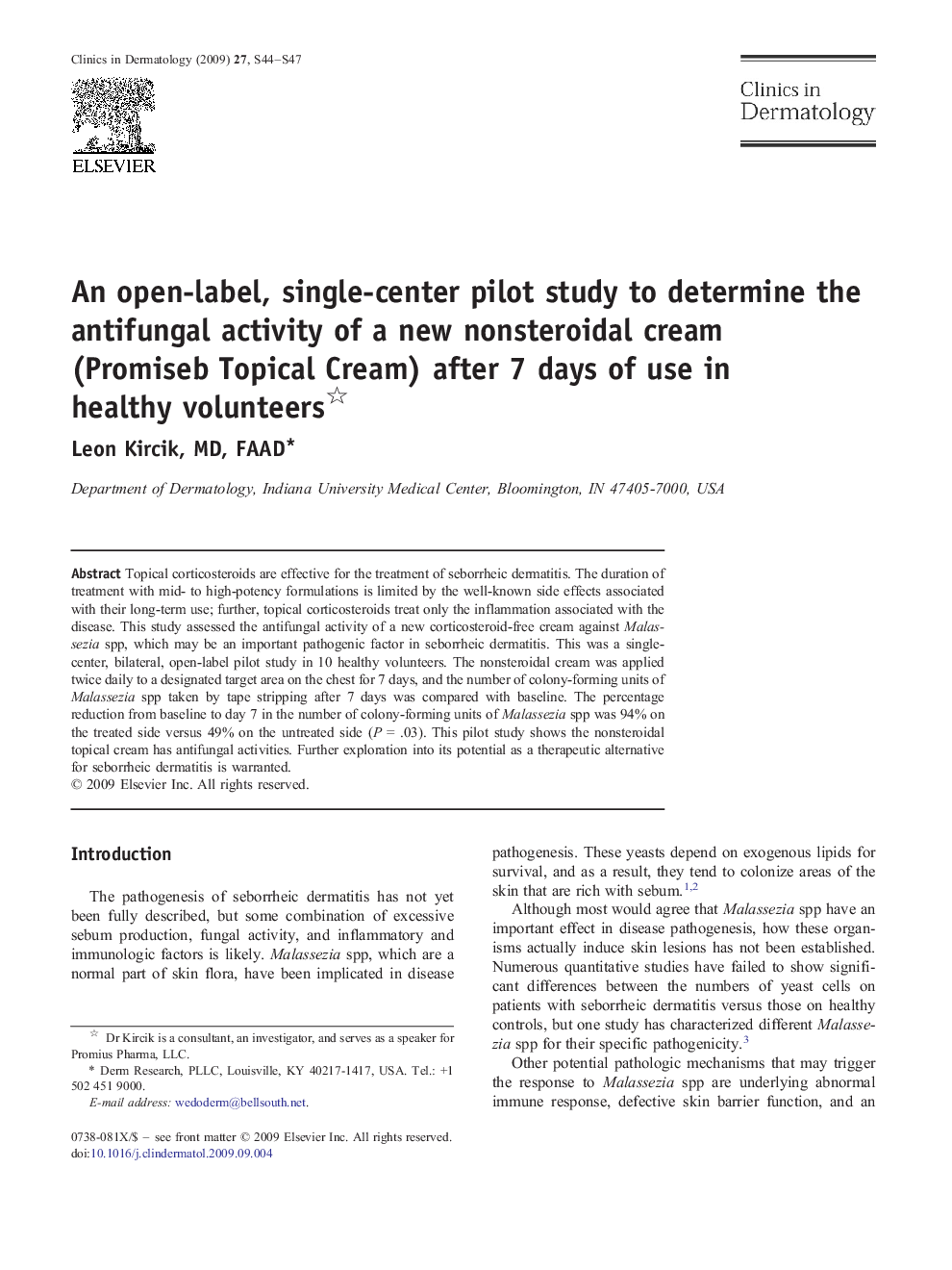| Article ID | Journal | Published Year | Pages | File Type |
|---|---|---|---|---|
| 3194893 | Clinics in Dermatology | 2009 | 4 Pages |
Topical corticosteroids are effective for the treatment of seborrheic dermatitis. The duration of treatment with mid- to high-potency formulations is limited by the well-known side effects associated with their long-term use; further, topical corticosteroids treat only the inflammation associated with the disease. This study assessed the antifungal activity of a new corticosteroid-free cream against Malassezia spp, which may be an important pathogenic factor in seborrheic dermatitis. This was a single-center, bilateral, open-label pilot study in 10 healthy volunteers. The nonsteroidal cream was applied twice daily to a designated target area on the chest for 7 days, and the number of colony-forming units of Malassezia spp taken by tape stripping after 7 days was compared with baseline. The percentage reduction from baseline to day 7 in the number of colony-forming units of Malassezia spp was 94% on the treated side versus 49% on the untreated side (P = .03). This pilot study shows the nonsteroidal topical cream has antifungal activities. Further exploration into its potential as a therapeutic alternative for seborrheic dermatitis is warranted.
